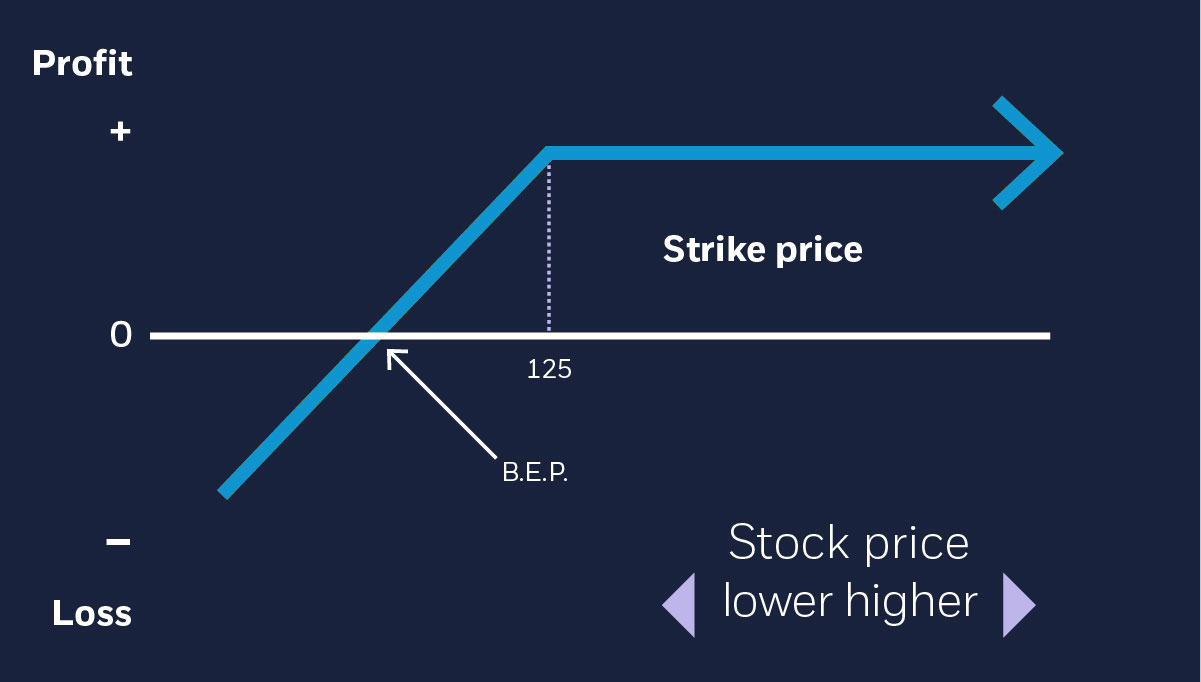Understand the risk of cash-secured puts
E*TRADE from Morgan Stanley
While all options trading involves a level of risk, certain strategies have gained a reputation as being riskier than others. For example, according to conventional wisdom, options trades such as covered calls are considered to be relatively conservative, and therefore may be more appropriate for risk-averse accounts. In contrast, options trades such as cash-secured puts—sometimes referred to as naked puts—have a reputation for being extremely risky, and thought to be “for experts only.” Although cash-secured puts and covered calls are distinct strategies requiring different levels of options trading approval, their risk/reward relationship is very similar.
Two trades, one graph
By looking at a risk/reward graph for both positions, it quickly becomes evident that the potential profits and losses for both covered calls and cash-secured puts appear equal.
The graph illustrates that the maximum profit is capped when the stock price increases to the strike price sold. All the risk of loss is to the downside, due to the long stock position as part of a covered call.
Similarly, a short cash-secured put graph shows that the maximum profit is also capped when the stock price rises above the short put strike. All the risk of loss is also to the downside, due to the fact that the investor is obligated to buy the stock at the strike price.
Pop quiz: Is the below risk/reward graph illustrating a covered call or a short put?

The correct answer is both! Whether this is a covered call at 125 or a cash-secured put at 125, the risk below the short strike price of 125 is the same.
Knowing when to short a put
When executing a cash-secured put, the key is the investor’s willingness to buy the stock (or ETF) at the strike price chosen to sell the put. It’s essential to remember that when doing this in a cash account such as an IRA, there needs to be a cash balance to cover the entire obligation to purchase the stock at the chosen strike price.
Here’s an example: Assume a stock is currently trading for $30 per share. If a trader wanted to buy that stock for $28 per share, he could sell the $28 puts for $2. In this case, he would need to have at least $2,600 (($28 x 100 to buy the stock) – ($200 collected from selling the put)) in his account in the event he has to purchase the shares.
The maximum profit from this cash-secured put is the premium received of $200, not including any commissions or sales fees. The maximum loss is if the stock were to fall all the way to zero, which would be a loss of $2,600. Remember, the trader only buys the stock if the stock price closes below $28 at expiration.
It’s important to note that for higher-priced stocks, the cash required to cover a cash-secured put can be large. Buying a further “out-of-the-money” put could limit the downside risk and reduce the amount of capital needed for this position. This strategy is called a credit put spread.
Short puts can be an effective trading technique, helping to essentially generate income from an investor’s willingness to potentially buy stock at a lower price. However, before investors begin trading options, it’s necessary that they understand all the risks involved, as well as the basic fundamentals of options trading.